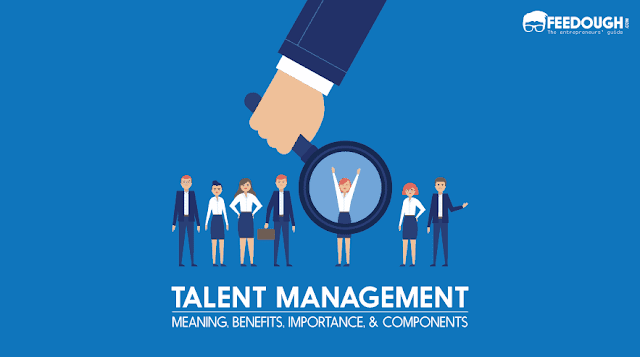
Source: LinkDin Published Mar 14, 2021, Pratiksha MohantyPratiksha Mohanty
What is Employee Wellbeing
Employee wellbeing is the collective state of a professional's mental, emotional, and physical health. Employee wellness, in the opinion of Gallup analysts, consists of five essential elements.
Pillers of Employee Wellbeing
Career wellbeing
the satisfaction people experience with their jobs and how they spend their days at work.
Social wellbeing
fostering relationships with friends and family that are healthy and fulfilling.
Financial wellbeing
being successful in managing one's personal finances.
Physical wellbeing
being in good health and having the energy to carry out daily chores.
Community wellbeing
connecting with others and experiencing a sense of home in your current location.
Source: https://www.siouxfalls.business/
Advantages of employee health and wellbeing?
The three soft skills of emotional intelligence, resilience, and mental toughness—essential for efficiency, creativity, and productivity—can be supported through wellbeing. Therefore, the foundation of productive work, a thriving workforce, and a successful business is employee welfare.
Employee happiness significantly influences
✅ Goal achievement
✅ Risk taking
✅ Finding practical, intelligent solutions to challenges that arise
✅ Decreased absenteeism
✅ Increased retention and engagement
✅ Reduced healthcare expenses
✅ A thriving company culture
What do Leaders promote for employee wellbeing?
Make it a part of your corporate culture if you wish to prioritize the welfare of your employees. Everybody needs to take care of their health, but HR can promote wellness by highlighting it as a core workplace value. Here are three strategies for incorporating health into your company's work environment.
✅ Balance work with play
Although keeping the same workflow is essential for productivity, individuals are not machines. There must be time for play in order to have the energy to work. People have an opportunity to re-energize and reconnect when mood-boosting, community-building, and social events like staff walks or park picnics are planned.
✅ Cultivate gratitude
Recognizing and expressing gratitude to individuals for their efforts and accomplishments can help HR directors foster comradery and meaningful work environments. Appreciation expression injects positivity and significance into the workplace.
✅ Promote mindfulness
The basis for making wise decisions, producing excellent work, improving communication, and thinking creatively is mindfulness. People who practice mindfulness are better able to control their emotions and thoughts. Before having a meeting, teams might cultivate mindfulness by engaging in group breathing exercises or meditations. Companies can designate a room or garden as a tech-free zone for people to spend quiet, uninterrupted alone time in order to foster mindfulness on an individual level.
building effective Employee wellbeing programs
✅ Identifying the problem areas
These include work-life imbalance, lack of motivation, and burnout.
✅ Evaluating the major barriers to wellbeing
People might not be able to achieve a level of wellbeing due to inadequate management, an excessive workload, or a misalignment of workplace ideals.
✅ Assessing the cost of low employee wellbeing
How are productivity and financial results impacted by a lack of wellbeing?
✅ Planning a wellbeing program
What wellness-related activities is your firm currently pursuing, and how do these efforts stack up against internal and external benchmarks?
Conclusion
In conclusion, it is critical for both businesses and employees to prioritize employee welfare. Employers may boost productivity, lower turnover rates, and improve job satisfaction by making investments in projects and programs that support physical, mental, and emotional wellness. Additionally, encouraging work-life balance, offering tools for stress management, and developing a positive workplace culture can make employees happier and healthier. In the end, putting employee well-being first benefits not only the individual workers but also the firm as a whole. Employers must therefore acknowledge the significance of employee welfare and take proactive measures to make sure their staff members feel supported and valued.
Reference Sources
Katie Nermoe (2021) The power of career well-being, https://www.siouxfalls.business/. Available at: https://www.siouxfalls.business/the-power-of-career-well-being/. (Accessed: April 9, 2023).
Guardian Jobs (2016) “Wellbeing in the workplace,” Youtube. Available at: https://www.youtube.com/watch?v=TI1SDDKohGk (Accessed: April 9, 2023).
Alight org (2021) 2021 Employee Wellbeing Mindset Study | Alight, 2021 Employee Wellbeing Mindset Study | Alight. Available at: https://www.alight.com/Thought-Leadership/2021-employee-wellbeing-mindset-study (Accessed: April 6, 2023).
Team, H. C. (2023) What Is Employee Wellbeing and How to Launch a Wellbeing Program, Haiilo. Available at: https://haiilo.com/blog/employee-wellbeing-definition-importance-best-practice/ (Accessed: April 5, 2023).
Charlie (2021) Employee Wellbeing - ENCOMPASS Benefits, ENCOMPASS Benefits. Available at: https://encompassbenefits.com/encompass-blog/health-safety/employee-wellbeing/ (Accessed: April 8, 2023).





We need to give lot of caring to our employess.. Well explained.
ReplyDeletethanks for sharing this blog Employers must focus on employee benefits to improve productivity, lower turnover rates, and improve job satisfaction, while also encouraging work-life balance, reducing stress, and positive workplace culture to work with motivation.
ReplyDeleteEmployee wellbeing always plays a major role on the development of an organization.
ReplyDeleteHappy employees makes the whole work place more happier. A Happier work place leads the company to the peak of success.
You have described the topic very clearly and enjoyed reading this blog..
Thank.you..